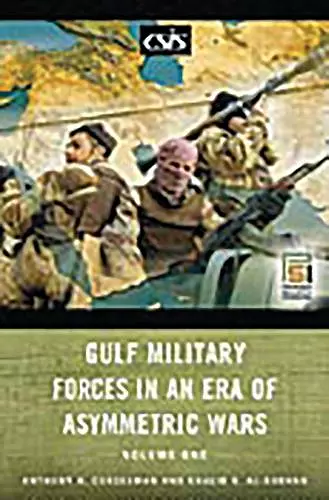Gulf Military Forces in an Era of Asymmetric Wars
[2 volumes]
Anthony H Cordesman author Khalid Al-Rodhan author
Format:Set / collection
Publisher:Bloomsbury Publishing PLC
Published:30th Dec '06
Should be back in stock very soon

Cordesman and Al-Rodhan provide an analytic study of how transnational terrorism, the threat of WMD proliferation, and the Iraq insurgency are having impacts upon the strategically vital states of the oil-rich Persian Gulf.
The significance of the Persian Gulf to international peace and security and to the global energy market cannot be overstated. This book demonstrates that the nature of military and political threats in the Gulf states has shifted. It analyzes developments in the force structures of the Gulf states and their ability to deal with this shift.The significance of the Persian Gulf to international peace and security and to the global energy market cannot be overstated. Events such as the attacks of September 11 and the rise in energy demand and prices have only highlighted the importance of stability in the Gulf to the health of the global economy. This book demonstrates that the nature of military and political threats in the Gulf states (Bahrain, Saudi Arabia, Iran, Iraq, Qatar, Yemen, and the UAE) has shifted during the past three years. Although the threat from Saddam Hussein's Iraq, which produced three recent, major conventional wars-Iran-Iraq (1980-88), Persian Gulf (1990), and Iraq (2003)-has largely disappeared, it has been replaced by concerns over the asymmetric warfare conducted by terrorist organizations and over the proliferation of WMDs by both states and terrorists. These developments are affecting the defense planning and strategic posture of each country, and this book analyzes developments in the force structures of the Gulf states and their ability to deal with this shift in the nature of the threat. The military and security forces of the Gulf states must evolve to adapt to the changing nature of the threat and take into account the risk of the Iraqi insurgency and the uncertainty surrounding Iraq's future. The key areas covered in this book include the internal terrorist threat to Saudi Arabia and the Gulf states; the impact of Iran's nuclear program and the risk it poses to energy and internal security in the Gulf area; and border disputes within the region that could develop into conflict. In addition, the book studies the impact of the Iraq War on regional security and the fear of the insurgency spilling over into neighboring states. Cordesman and Al-Rodhan demonstrate a shift toward using internal security services to deal with the threat of extremism and asymmetric warfare. They also suggest that high energy prices and export revenues provide the Gulf countries the...
This two-volume work provides a detailed assessment of different national military forces arrayed across the Gulf region. The authors first address the regional military and security picture, addressing such issues as Islamist terrorism, growing Iranian regional power, Iraq as a power vacuum, broad regional military trends, and the changing nature of military power. Individual chapters are then offered on Bahrain, Kuwait, Oman, Qatar, Saudi Arabia, the United Arab Emirates, Iran, Iraq, and Yemen. Each of these chapters profiles the resources, arms, and manpower of each country's military and other security forces (including intelligence agencies) and reviews the country's particular strategic concerns and challenges. * Reference & Research Book News *
ISBN: 9780275992507
Dimensions: unknown
Weight: 1276g
656 pages